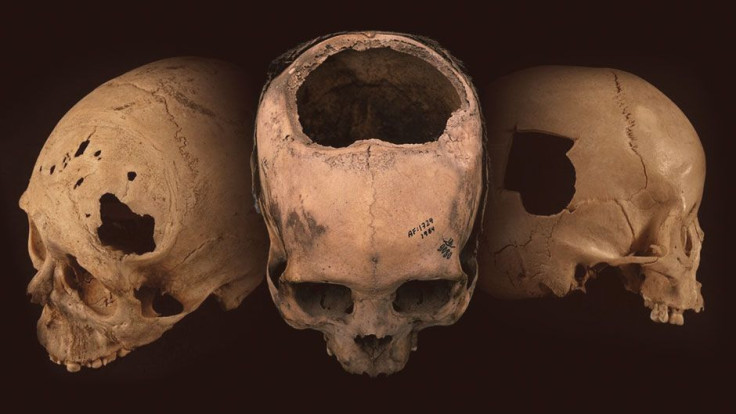Ancient Peruvian Doctors Were Proficient At Performing Skull Surgeries, Study Finds

No matter how technologically advanced our medical resources might be, a skull surgery or the act of trepanation — scraping, cutting, or drilling an opening into the head — is something we could never imagine in our wildest dreams. The chance of loss of life always lurks around in such cases, something that has led people to avoid these procedures as much as possible.
However, if the latest study from a group of researchers at the University of Miami is anything to go by, this was not the case in ancient Peru where doctors were extremely proficient at conducting procedures of this kind.
The researchers came to this theory after analyzing the skulls of people from the Inca Empire — which is modern-day Peru — and the American Civil War. The findings noted in the work revealed the chances of survival of Inca patients after skull surgery was twice in comparison to those during the civil war, which occurred more than three centuries later in the era when doctors were much better equipped and trained.
“There are still many unknowns about the procedure and the individuals on whom trepanation was performed, but the outcomes during the Civil War were dismal compared to Incan times,” David S. Kushner, the lead author of the latest study, said in a statement.
“In Incan times, the mortality rate was between 17 and 25 percent, and during the Civil War, it was between 46 and 56 percent. That’s a big difference,” the researcher added. “The question is how did the ancient Peruvian surgeons have outcomes that far surpassed those of surgeons during the American Civil War?”
Though this question cannot be exactly answered, the researchers speculated the lack of hygiene during the American Civil War could be the reason behind the drastic difference. They noted civil war surgeons used unsterilized medical tools and even their bare fingers to open cranial wounds for probing or breaking up blood clots.
“If there was an opening in the skull they would poke a finger into the wound and feel around, exploring for clots and bone fragments,” Kushner said.
As a result, nearly every civil war soldier with a gunshot wound suffered from the critical infection.
The data collected for the study suggested Peruvian doctors were good at preventing the infection, but there was no evidence of how they did that. Also, there was no way to determine what kind of anesthesia they used back in the day to perform the surgeries. Scientists think it could be coca leaves or some kind of fermented beverage, but nothing can be said for sure.
“There are no written records, so we just don’t know,” Kushner added.
That said, one of the possible reasons behind their incredible success at this procedure could be practice. More than 800 trepanned skulls — with one to seven holes — dating back to 400 BC have been found in different burial caves and archaeological digs in Peru. This is more than the number of such skulls throughout the rest of the world.
It is also worth noting the study shows ancient Peruvians improved their surgery techniques over the centuries. According to earliest samples from about 400 to 200 BC, more than half the patients died in the surgery, but then the success rate went well over 80 percent in the time leading up to the rise of the Incan Empire in the 15th century.
“Over time, from the earliest to the latest, they learned which techniques were better, and less likely to perforate the dura,” Kushner concluded. “They seemed to understand head anatomy and purposefully avoided the areas where there would be more bleeding. They also realized that larger-sized trepanations were less likely to be as successful as smaller ones. Physical evidence definitely shows that these ancient surgeons refined the procedure over time. Their success is truly remarkable.”
© Copyright IBTimes 2024. All rights reserved.





















